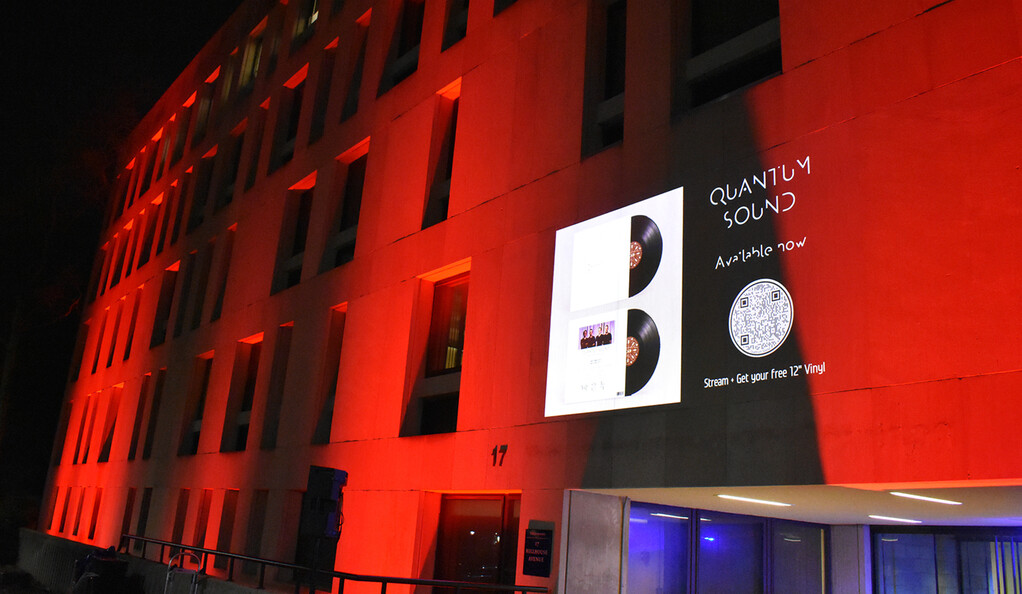
Under an early evening dusk, made darker by rain clouds overhead, shades of red, blue, and rose flowed across the white façade of 17 Hillhouse Avenue as an electronic landscape of sounds pulsed from speakers.
This was the scene on a recent April evening, as a crowd gathered outside the home of the Yale Quantum Institute (YQI) to celebrate the end of Yale Quantum Week and the release of the album “Quantum Sound,” a collaboration between a trio of scientists and musicians — Spencer Topel, a sound artist and composer and the 2018-2019 YQI artist-in-residence, and two former Yale physics graduate students, Kyle Serniak ’19 Ph.D. and Luke Burkhart ’20 Ph.D. They were brought together by Florian Carle, YQI’s manager and creator of the artist-in-residence program, and the producer of the album.
The album project, which transforms the measurements of superconducting quantum devices into sound, both reflects the raw data and shapes it into an audio narrative.
“In the same way that some people are more receptive to music as opposed to visual art, they may be more receptive to music as a medium for conveying certain scientific concepts,” said Serniak, who now works at MIT Lincoln Laboratory, a federally funded research and development center in Massachusetts.
Topel looks at the project in the other direction: “How can quantum physics unlock new forms of musical and artistic expression?
“Eventually some of these [quantum] experiments will yield new devices that we can use to solve altogether different problems,” he went on. “A portion of these problems will be art, dance, writing, and music.”

(Photo by Allie Barton)
“Quantum Sound” may not have the hooks to propel it up the Billboard charts, but attendees of the Yale event — about 150 physics-heads, electronic-music geeks, and assorted curiosity seekers — quickly snapped up the 100 vinyl copies of the album offered as a giveaway. The album is a single 32-minute track, split into two sides: “Noise” and “Tone.” The light show, designed by Carle, used tones of blue and red to signify the movement of superconducting qubits from a grounded state to an excited one.
As the album played, soft sonic waves gave way to what sounded like rolls of thunder; fittingly, as the music rose to a crescendo, the skies opened up. Undeterred by the downpour, the intrepid audience sheltered under umbrellas and listened on.
The project, which was first performed live at the International Festival of Arts and Ideas in June 2019, has had a longer afterlife than even its creators anticipated. “At the beginning it just seemed like a fun idea,” said Serniak. “I am pleasantly surprised that it’s being pressed on vinyl and that we’re still talking about it three years later!”
“Quantum Sound” was also presented at the first International Symposium on Quantum Computing and Musical Creativity, an online event held last fall. And a chapter detailing the science behind the art, from the data-generating technology the trio used to the musical motifs they surfaced, will be published in the forthcoming book “Quantum Computer Music: Foundations, Methods and Advanced Concepts.” And Topel is looking into releasing the instruments they used for “Quantum Sound” — three variations of quantum synthesizers — on a software platform that would allow students of all ages to experiment with the technology and get closer to the science.
“This project really changed how I think about the tools we use as artists to perceive the world,” said Topel. “Superconducting systems, like the ones being studied at Yale, have great computational potential, but they also offer us a glimpse into an altogether different part of our universe, the quantum realm.”